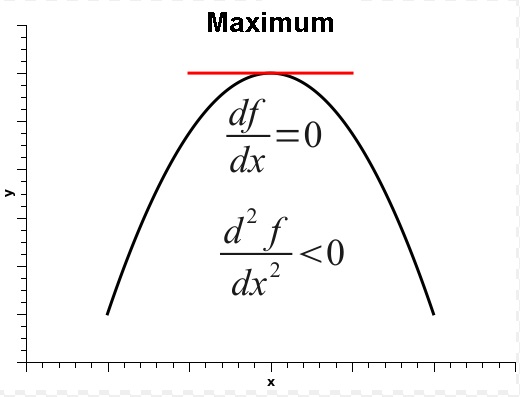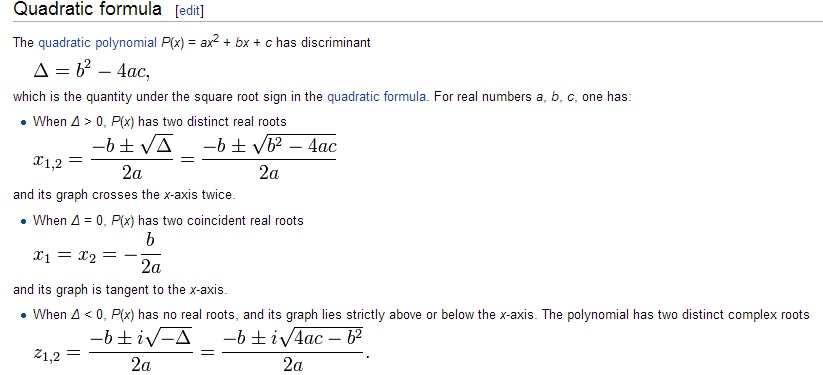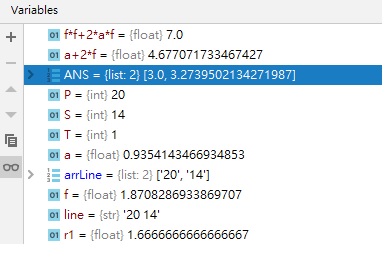J7 Problem - CodeChef codechef J7 - “the best box” guidance:
- to get optimal maximum size: (special thanks to falcon - Sahin Mammadov) suppose we have 2 functions "a" & "b". function "f(x)=a*b" and constant "c=a+b". b=c-a, from that f(x)=a*b, f(x)=a*(c-a)=a*c-a**2. to get that functions maximum, we get their derivatives(look at images below).
maximum function
max and min function
and after derivative f '(x)=c-2*a=0, a=c/2, b=c-a=c-(c/2)=c/2. so from the equation there we understand that to get optimal maximum "a" and "b" needs to be equal.
- calculation of volume of rectangle, given surface area and perimeter: suppose all sides are not equal: P(perimeter)=4*(a+b+c), S(surface area)=2*a*b+2*a*c+2*b*c and V(volume)=a*b*c. but on the above calculation i've shown that at least two sides needs to be equal to get optimal maximum. so, a=b, (but here i will put "b" intsead of "c") P(perimeter)=4*(a+a+b), S(surface area)=2*a*a+2*a*b+2*a*b and V(volume)=a*a*b.
next step, P/4=2*a+b, S=2*a**2+4*a*b take square of P/4 side: (P/4)**2=(2*a+b)**2=4*a**2+4*a*b+b**2=2*a**2+4*a*b+2*a**2+b**2=S+2*a**2+b**2; (P/4)**2=S+2*a**2+b**2; next step, P/4=2*a+b, from there P/4-2*a=b. and then put P/4-2*a instead of b at the equation above: (P/4)**2=S+2*a**2+(P/4-2*a)**2. from there we get: 6*a**2-P*a+S=0; and now apply discrimination formula(shown below): a1,a2=(P+-sqrt(P**2-24*S))/12;
discrimination
and after all, we apply a1,a2 to "b" and "V"(volume): V=a**2*b, P/4-2*a=b; V=((P+-sqrt(P**2-24*S))/12)**2*b =
=((P+-sqrt(P**2-24*S))/12)**2 * P/4-2*a
=((P+-sqrt(P**2-24*S))/12)**2 * P/4-2*((P+-sqrt(P**2-24*S))/12);
but i actually printed out, ((P-sqrt(P**2-24*S))/12) instead of ((P+sqrt(P**2-24*S))/12), and got AC, dont know why. (it would be nice if you rectify me)
and also to print out 2 digits after ","(comma) use include <iomanip> and cout<<fixed<<setprecision(2)<<etc.
thanks. any cooperation will be appreciated
NOTE: "x**2" means pow(x, 2), x power of 2



